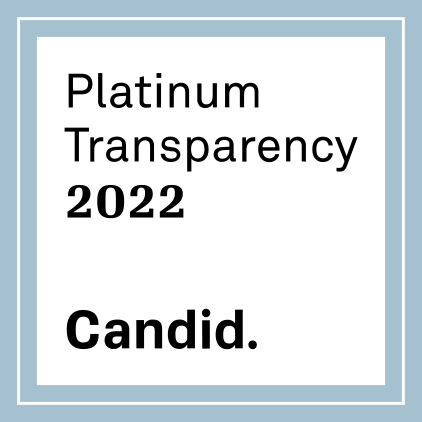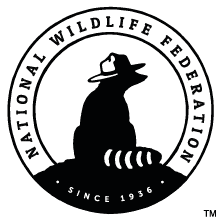Thousands of stream miles in Illinois, including many which flow just downstream of headwaters, are impacted by activities of small units of government called drainage districts. Drainage districts, through the decisions of their commissioners, have broad authority under Illinois’ Drainage Code to undertake activities on streams that negatively impact water quality and habitat. Typically the streams under the authority of a drainage district are not monitored by state environmental agencies.

Streamside habitat alteration, such as channelization and maintenance work performed by drainage districts, is the third leading cause of Clean Water Act impairments in Illinois, meaning that these streams do not meet water quality or aquatic life goals; these degradations affect over 2,700 miles of rivers and streams, according to Illinois EPA.
Each district, governed by three commissioners, has the authority to assess taxes within the district and perform maintenance needed to provide adequate drainage. Unfortunately, drainage practices have not changed much since the enabling legislation was adopted in 1879. In 1973 the Drainage Code was amended to include the requirement that drainage district commissioners consider protection of environmental values, such as trees, fish and other wildlife, as part of their decision making process. Unfortunately, in practice, this requirement is ignored; traditional maintenance activities such as dredging and clearcutting banks remain the norm. As a result, both construction of new drainage projects and maintenance of existing ones continue to have serious impacts on river health.
Drainage districts frequently remove shade-giving trees along rivers and streams, dredge and remove elements of aquatic habitat along the stream bottom, and increase habitat fragmentation by disconnecting streamside forested corridors. Altering a stream’s habitat has a profoundly negative impact on aquatic life. Specifically, this work can:
- Destroy wildlife habitat, spawning areas, and food sources for fish, birds, reptiles, and other animals;
- Increase water temperatures to levels that harm many aquatic species;
- Increase flood heights, streambank erosion and streambed scour;
- Increase sedimentation, which covers and fills in aquatic habitat, and reduces fish spawning;
- Reduce the stream’s capability to assimilate pollutants such as nutrients;
- Reduce the recreational opportunity and aesthetic appeal of flowing waters, at the site of the disturbance as well as many miles downstream;
- Impact the overall health of the stream.
Drainage in Illinois: Time for a New Approach
Before reading any further, briefly consider the differences between these two photos taken from the exact same view point on the Spoon River.

Spoon River Before Drainage Alterations, May 2003

Spoon River After Drainage Alterations, April 2005
What you might not know is that what happened on the Spoon in April 2005 could also happen on a river near you.
Illinois’ thousands of miles of rivers and streams wind through forests, urban areas, high limestone bluffs and lowlands. For many, home and community are defined by the rivers they live on or near, rivers they fish or paddle, and rivers where they go to watch birds and other wildlife that make their home along their banks.
Rivers and streams have also played an integral part in shaping Illinois’ agricultural economy. For the first settlers, they offered a form of natural drainage for lands that were often inundated with water. Later, as human-built agricultural drainage systems were put into place, rivers and streams were enlarged, deepened and straightened to achieve the goal of quick, high-capacity field drainage.
In the late 1800′s, when agricultural drainage systems were first built, there was no expectation or requirement to consider how stream channelization might impact riparian ecosystems. Like many other industries, however, agriculture has undergone tremendous changes in knowledge, technology and practice. Changes have, at times, resulted from the fact that those practices degraded or harmed natural ecosystems. For example, the invention of tillage equipment that turns over a smaller amount of soil, and an increased popularity in “no till” practices, have reduced soil erosion and its resulting environmental impacts. Buffer strips have been promoted along agricultural fields to trap sediment, fertilizers, pesticides, and bacterial pathogens that would otherwise enter the rivers and streams adjacent to fields.
Today, almost 2000 drainage districts in Illinois continue to dredge, channelize, and clear cut along Illinois’ rivers. Like the problems caused by tilling and runoff, the negative environmental effects of agricultural stream channelization on river ecosystems have been recognized by state agencies, county soil and water conservation districts, and other experts. In 2001, the Department of Natural Resources issued a report entitled “Critical Trends in Illinois Ecosystems.” With respect to the conditions of the state’s rivers, the report concluded that most Illinois streams had only fair to poor habitat quality and species diversity. Those river basins that ranked the worst in habitat typically were basins where:
- agriculture was the predominant land use
- streams had been channelized
- streams lacked natural habitat features such as wooded riparian corridors.

A 1997 University of Illinois Extension report entitled 60 Ways Farmers Can Protect Surface Water summed up the problem when it said “Channelization seemed like a good idea at the time,” but “channelization often makes things worse in the long run,” and is “an idea whose time has gone.” The report recommends letting streams follow their normal path.
Yet, unlike changes in tilling practices and incorporating buffer strips into crop acreage, few steps have been taken to promote and implement newer drainage practices to minimize disturbance of riparian ecosystems. Instead, traditional practices largely remain the norm and rivers are routinely stripped of their vegetation and channelized, causing habitat loss for fish and wildlife. The pictures shown above were taken at the exact same spot on the Spoon River in Champaign County and vividly illustrate the dramatic impacts to the river from drainage maintenance activities performed in April of 2005.
In a state where 70% of the land is used for growing crops, adequate drainage is essential for crop success and for the health of the state’s agricultural economy. However, equally important is ensuring that the other economic and environmental benefits of those rivers and streams that co-exist with agricultural lands are not lost.
Prairie Rivers Network believes it’s time for a new approach to drainage maintenance that balances all river functions and recognizes their environmental value as the Drainage Code requires. Fortunately, new techniques and approaches to drainage have the possibility of providing needed drainage for property and farm, while providing greater protection to water quality, wildlife habitat, and fisheries. Prairie Rivers Network is advocating for the adoption of improved drainage techniques that will also protect the environment.
Researchers at the University of Illinois have put together a white paper on the informational needs that would help drainage district commissioners make informed decisions and use more targeted drainage techniques that could minimize environmental impacts and costs to taxpayers. You may download this file on the University of Illinois Extension webpage.
You may also read the Illinois Drainage Code.
With the support of the Lumpkin Family Foundation, Prairie Rivers produced ”A Citizen’s Guide to Illinois’ Agricultural Drainage Practices and Law” for individuals who want to learn more about the practices, policies, and law regarding agricultural drainage in Illinois and who want to ensure that providing adequate drainage is not done at the expense of clean water and healthy river habitat.
After you have read the Guide, we encourage you to learn more about your local drainage district and to get involved in decisions that may affect the health of your local river. Working together, we can achieve a new, environmentally sound approach to drainage in Illinois.








